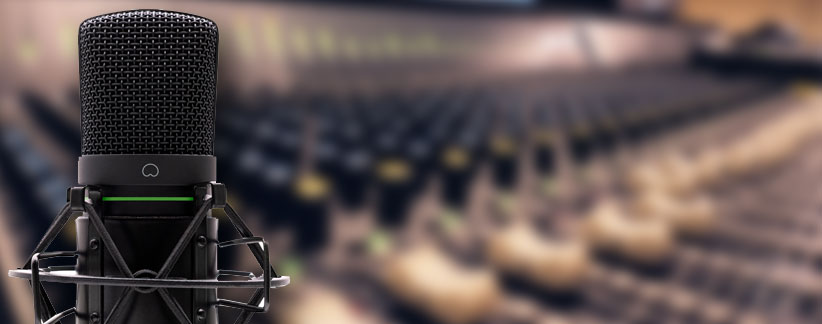You’ll have many choices in microphones, whether you’re buying them online or from any of the local electronic stores. This makes choosing the best among them quite difficult. However, this doesn’t have to be a daunting task. Although there are a number of types of microphones, you can grab the one that’s best for you.
In order to make this happen, you need to know what type of microphone you intend to use. You need to be absolutely clear about your expectations from the microphone. This would help you in narrowing down your choices and picking an ideal one. Here are some of the common types of microphones with an amazing sound quality:
1. Types of Dynamic Microphones
Dynamic microphones or dynamic mics are considered as workhorses in the world of microphones. They have a fantastic sound quality and are durable. The best part is that you can get them at a low cost. Dynamic mics function like a speaker in reverse. They use an induction coil that’s movable and suspended in the magnetic field.
Responsive to transients, these mics can handle high sound pressure level (SPL) quite efficiently. Perhaps this is the reason why they’re a natural choice for loud sources, such as guitar and bass cabs. You must definitely consider having one dynamic mic or two in your collection. This would also be one of the cheapest options.
2. Large diaphragm condenser microphones
When you think about studio recording microphones, there’s one mic that would come to your mind. It’s the large diaphragm condenser microphone. These mics are large, serious-looking, and stylish. You’ll get to see them in most of the professional recording studios. They work by using a condenser or capacitor for converting acoustic vibrations into electrical current. For this, they need a power source to operate.
These microphones are more sensitive than ribbon mics or dynamic mics. They also produce a louder signal. It is their sensitivity that makes them ideal for quiet or extremely dynamic sources, such as vocals. There are a number of sonically pleasing voice qualities that large diaphragm condensers have. You can associate the ‘larger than life’ sounds created by these mics with the studio vocals.
3. Small diaphragm condenser microphones
Also called pencil condensers, they’re the less flashy and smaller cousins of the large diaphragm condenser microphones. Despite their smaller stature, these mics are just as useful as their larger cousins. You can expect a great transient response in the small diaphragm condenser mics. They also have consistent pickup patterns and extended top end.
With these qualities, they’re ideal for acoustic instruments and realistic stereo techniques. You’ll mostly see the small diaphragm condenser microphones when you’re in one of the classical music recording sessions. Often, they come in pairs for stereo recording. This makes them particularly effective for the creation of accurate stereo images of real acoustic spaces.
4. Ribbon microphones
If you’ve seen the photos of the golden age of broadcasting, you might’ve noticed the classic ribbon mics. The presenters during those times spoke into these microphones. Thus, the ribbon technology dates back to those times. In those days, ribbon designs were much fragile. They could break if they were moved in an improper way or if they were subjected to high SPL.
Nevertheless, their sound was worth the trade off when it came to durability. Ribbon microphones use an ultra-thin ribbon, which is made of an electro-conductive material. It is suspended between the poles of a magnet, which causes it to generate signals.

